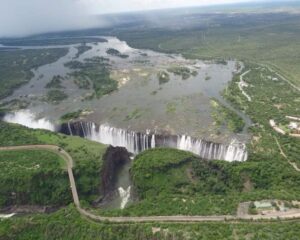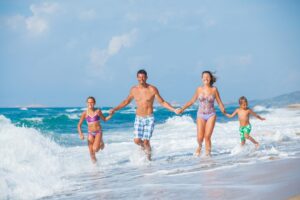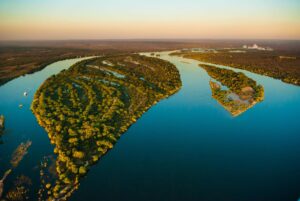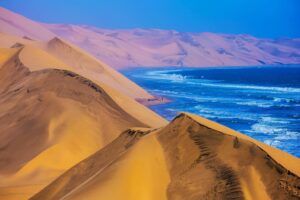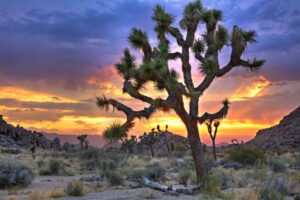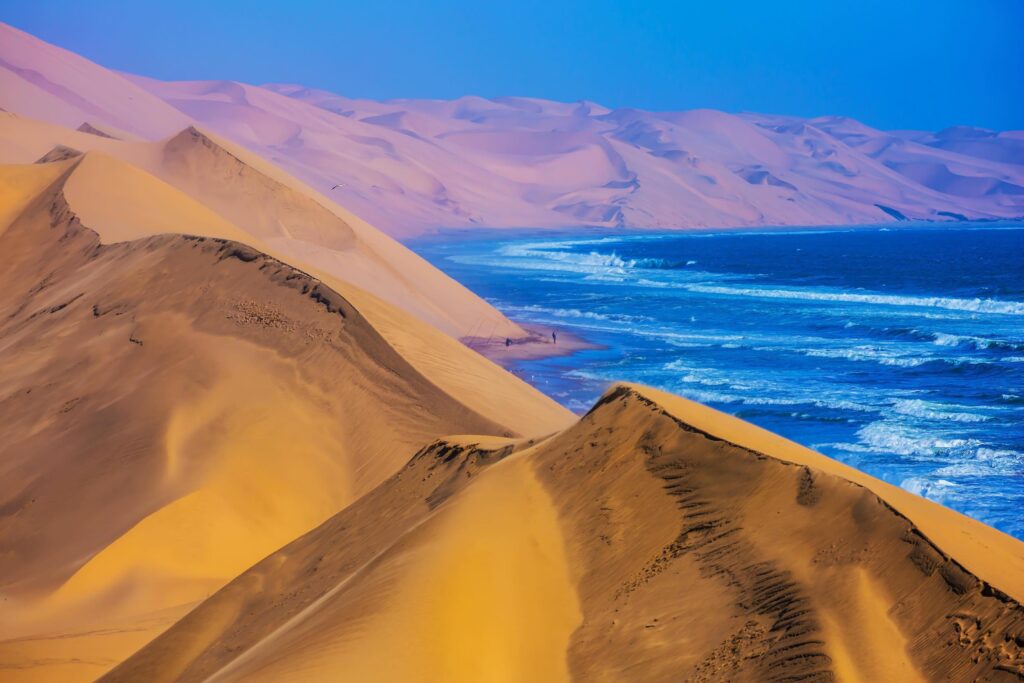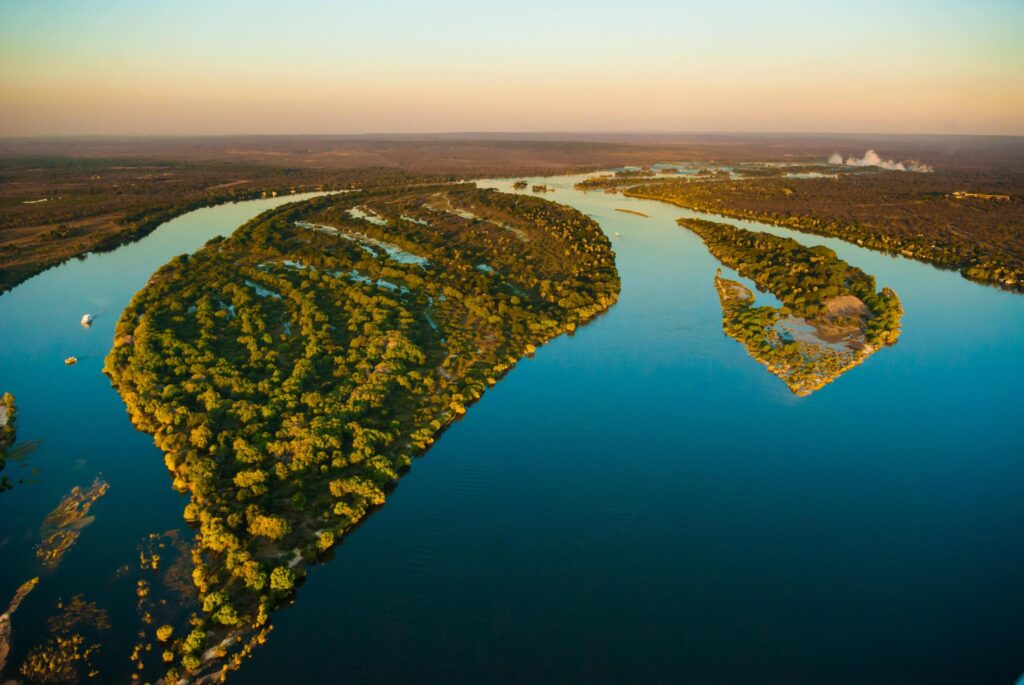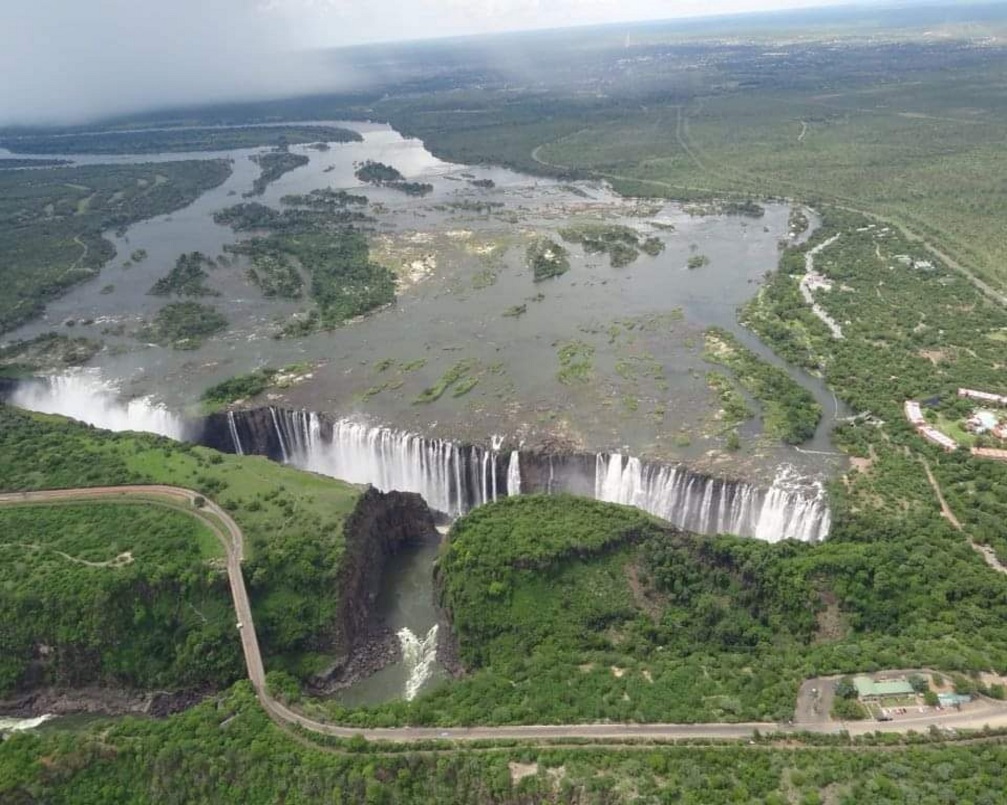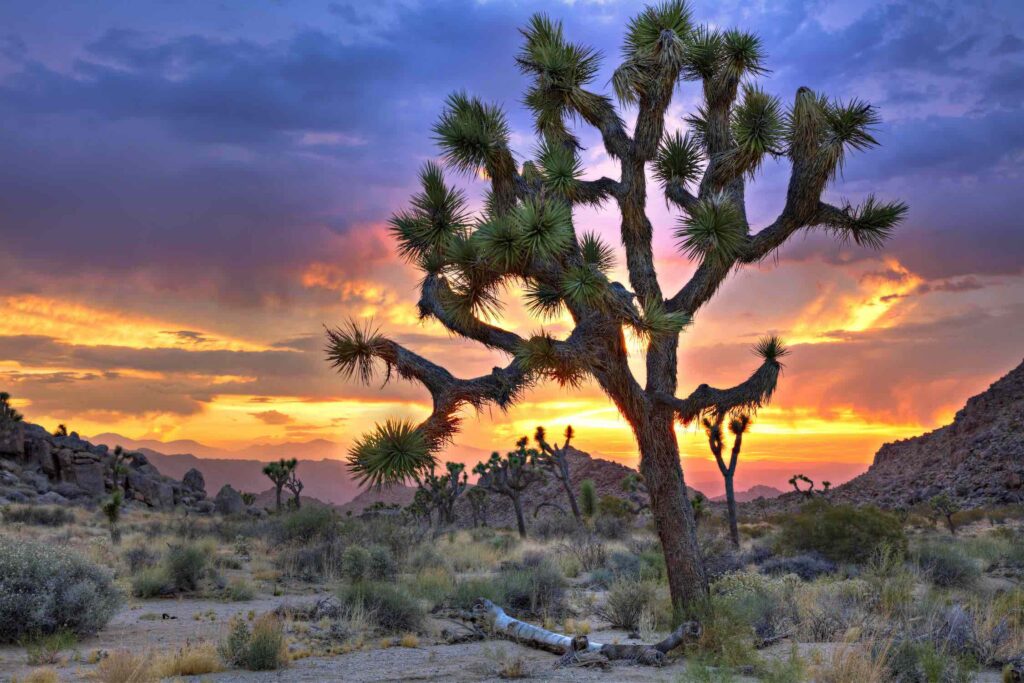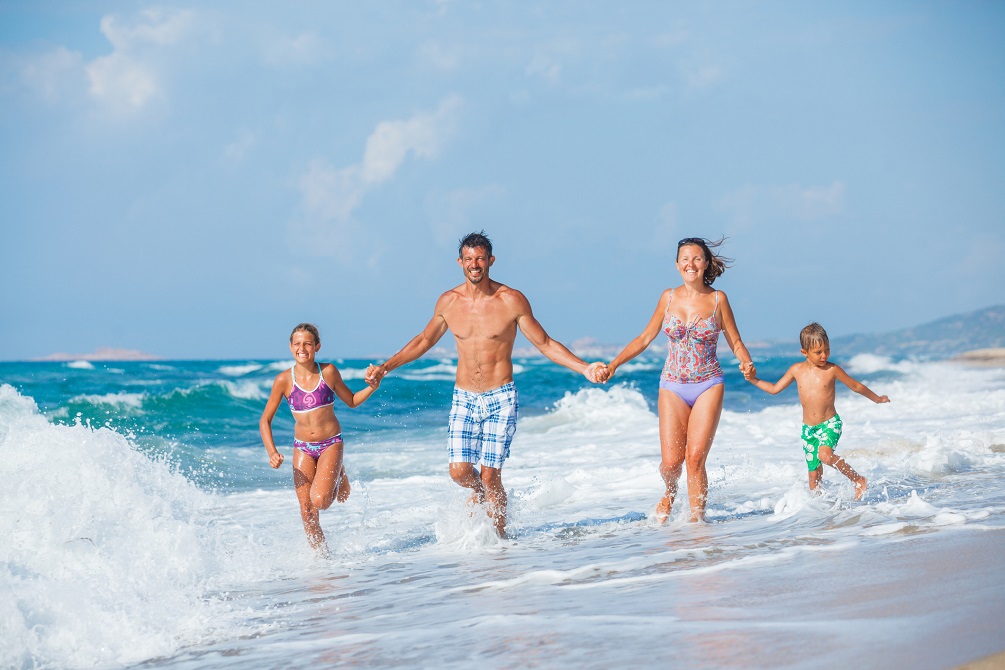Namibia South Africa
Namibia is one of Southern Africa's top-rated geographical museums, housing the world's oldest desert, highest sand dunes, and second-largest canyon.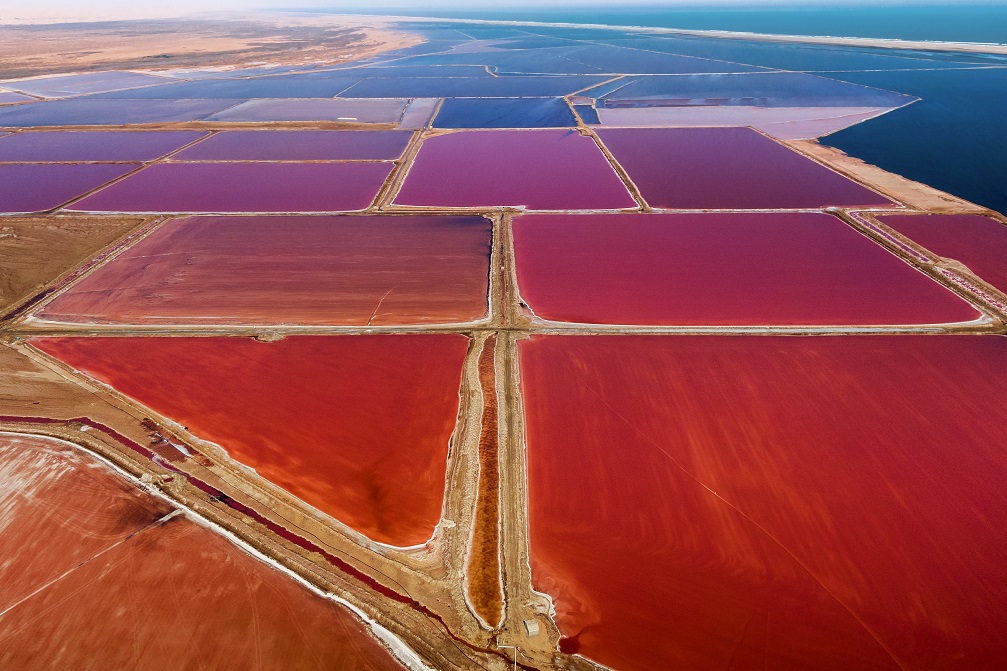
Namibia is a charming Southern African country with a short existence of thirty-one years.
Since gaining its own identity in the late twentieth century, Namibia has grown into a country filled with proud and lively people. Over the years, holidays in Namibia have gained in popularity internationally owing to its vast treasure trove of natural wonders.
Namibia boasts an enigmatic landscape where the country’s chief desert meets a volatile sapphire ocean.
Like many Southern African countries, wildlife conservation is vital to Namibians, as can be seen by the parks and reserves around the country that protect the Big Five.
Not only is Namibia one of the best countries to experience an African safari, it’s also ideal for stargazing, hot air ballooning, quad biking and road tripping.
Uninhibited exploration of the southern night sky is made possible by a combination of Namibia’s low population density and low air and light pollution.
On the country’s west coast, you’ll find rust-red sand dunes ideal for quad biking and vast plains perfect for hot air ballooning.
Driving around Namibia on seemingly endless stretches of road surrounded by undisturbed natural landscapes can be a much-needed escape from bustling city life.
A Namibia itinerary holds plenty of surprises like its exotic culinary quirks, which form the pillars of Namibian cuisine, and its blend of about thirteen different languages and cultures.
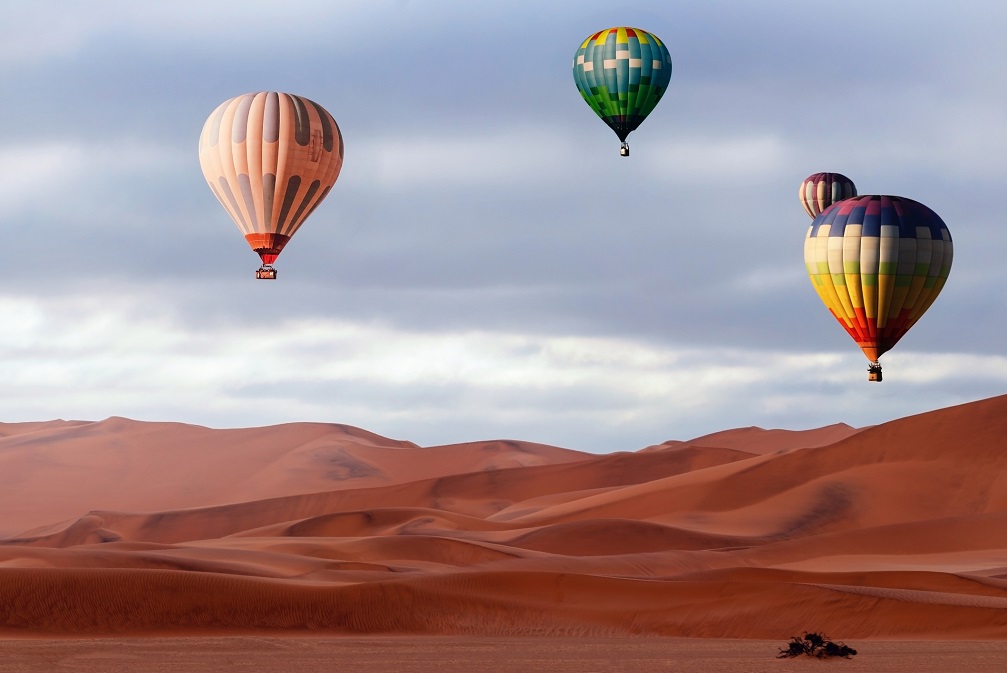


Namibia is a country situated in Southern Africa. It shares a border with Angola in the north, Botswana in the east, South Africa in the southeast, and Zambia in the northeast. The Atlantic Ocean covers the entire western region of Namibia, creating an unmissable view where the turquoise sea meets the iconic copper sand dunes of the Namib Desert.
The Namib Desert, along with the central plateau and the Kalahari, forms part of the country’s landscape. The Namib (meaning ‘vast place’ in one of the local ethnic languages, Nama) is a cool coastal desert, and it’s a rarity on the planet. This geographical enigma, and the oldest desert in the world, houses three crown jewels of the country: Sossusvlei, Dune 7 and the Skeleton Coast.
Sossusvlei is a pan formed from salt and clay nestled by giant crimson sand dunes—some of the largest in the world. It’s a spectacular sight and the reason many travelers visit Namibia. Dune 7, the seventh dune past the Tsauchab River, is the highest sand dune in the world and makes for a thrilling quad biking adventure. The Skeleton Coast is the most fascinating area of the Namib Desert, featuring spooky remnants of ships and animal remains.
The Central Plateau is the main agricultural zone of Namibia and where the capital city, Windhoek, is located, and the Fish River Canyon is in the south. The Fish River Canyon is the world’s second-largest canyon, following the Grand Canyon in the USA.
The Kalahari is a hardpan and rock-filled landscape covering the eastern side of Namibia.
Multiple rivers form natural borders around Namibia; the Orange River flows in the south, the Kunene and Kavango rivers in the north, and the Zambezi, Kwando, Linyanti, and Chobe rivers in the northeast.
There are no direct flights to Namibia from the UK and most people will travel to Namibia via South Africa. It is possible to fly to Namibia via Amsterdam on KLM, via Doha on Qatar Airways, or via Addis Ababa on Ethiopian Airlines.
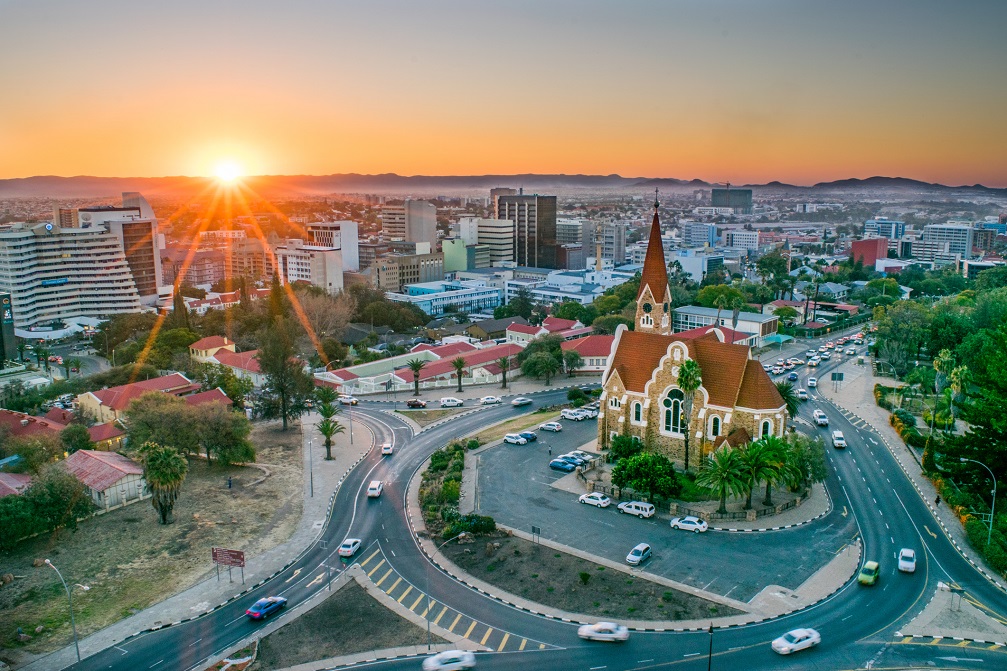


Namibia has a subtropical desert climate. The county has plenty of sunshine (300 days worth!), an average rainy season in the early months of the year, and little humidity.
Summer is a prevalent season in the country. During the long Namibian summer (October to March), the country’s northern regions are prone to temperatures nearing 40 degrees Celsius, while the central highlands can experience temperatures in the mid-30s.
During a winter holiday in Namibia (Late May – late August), it’s warm during the day and cold at dusk and dawn. The coast has milder temperatures and chilling winds all year round.
The rainy season starts in January, and in the far south, rainfall occurs during winter.
Which begs the question, what is the ideal time for a Namibia holiday?
Any time of year is prime for a tour across Namibia. Most travelers prefer to travel to Namibia during the winter for a fly-drive around the country because temperatures are mild albeit extra cold at night.
A winter Safari in Namibia is also the best time for game viewing. In the Etosha National Park, wildlife flocks to the permanent water holes when the open water in the veld dries out. Zebras and cheetahs are among some of the animals you might see in the park.
Winter is the high season for Namibia holidays, tours, and safaris, so make sure to book your well in advance if you intend to travel to Nambia during this season.
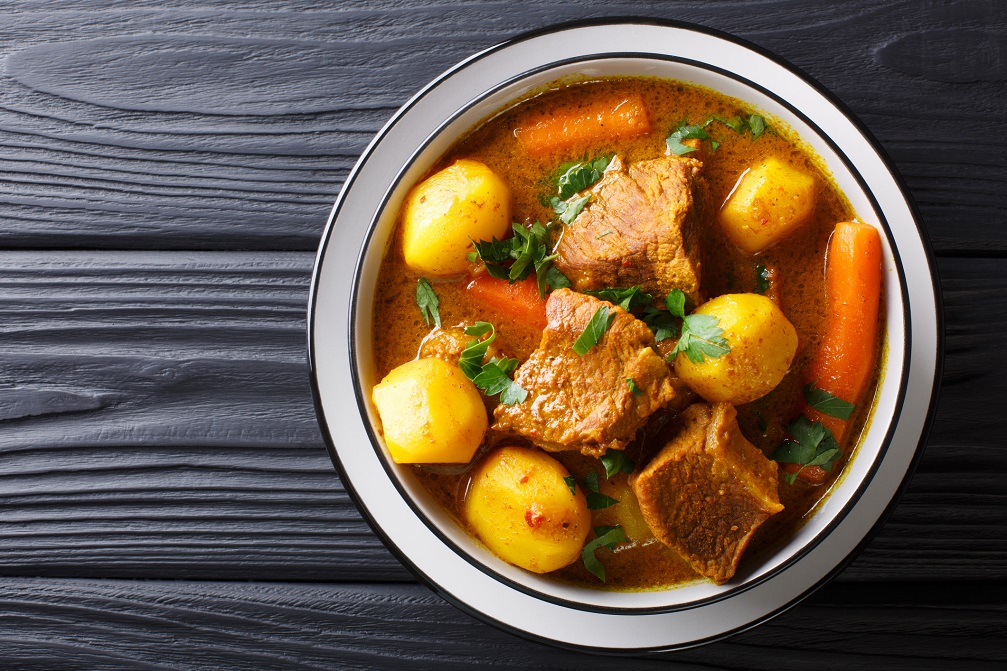


Namibian cuisine is a mixture of ingredients and the preparation styles of different cultures. It reflects the need for survival over luxury and the humble evolution of the nation.
Some typical meals in Namibia bear similarities to the food enjoyed in other Southern African countries like a vetkoek. European foods like boerewors (Afrikaans/dutch for ‘farmer’s sausage’) and Sauerkraut are common.
Most signature meals have one main component that’s flavoured with earthy spices and garnishes.
Meat is a staple of the Namibian diet. Beef, lamb, goat, and Oryx are some meats incorporated into most meals by locals.
A local experience that you should treat yourself to during your Namibia journey is kapana (grilled beef) at Single Quarters in the capital city of Namibia, Windhoek. The beef is cut into thin slices, seasoned with spice, chilli or salt and braaied (or barbequed) over an open fire, giving the meat a smoky flavour. Top it off with a side of ‘salsa’, diced onions and tomatoes, to make it tastier.
Namibian cuisine also consists of a seasonal wild mushroom called Owawa. This highly demanded vegetable grows to an enormous size of 50 cm in diameter sometimes.
There are exotic dishes too, like mopane worms, which you should try if you feel adventurous, and bullfrog (this meal is more common in Namibia’s northern regions and cooked specially to prevent poisoning).
An assortment of seafood can be found in Namibia’s coastal towns. Swakopmund has the best oysters, and lobsters are a local delicacy in Luderitz.
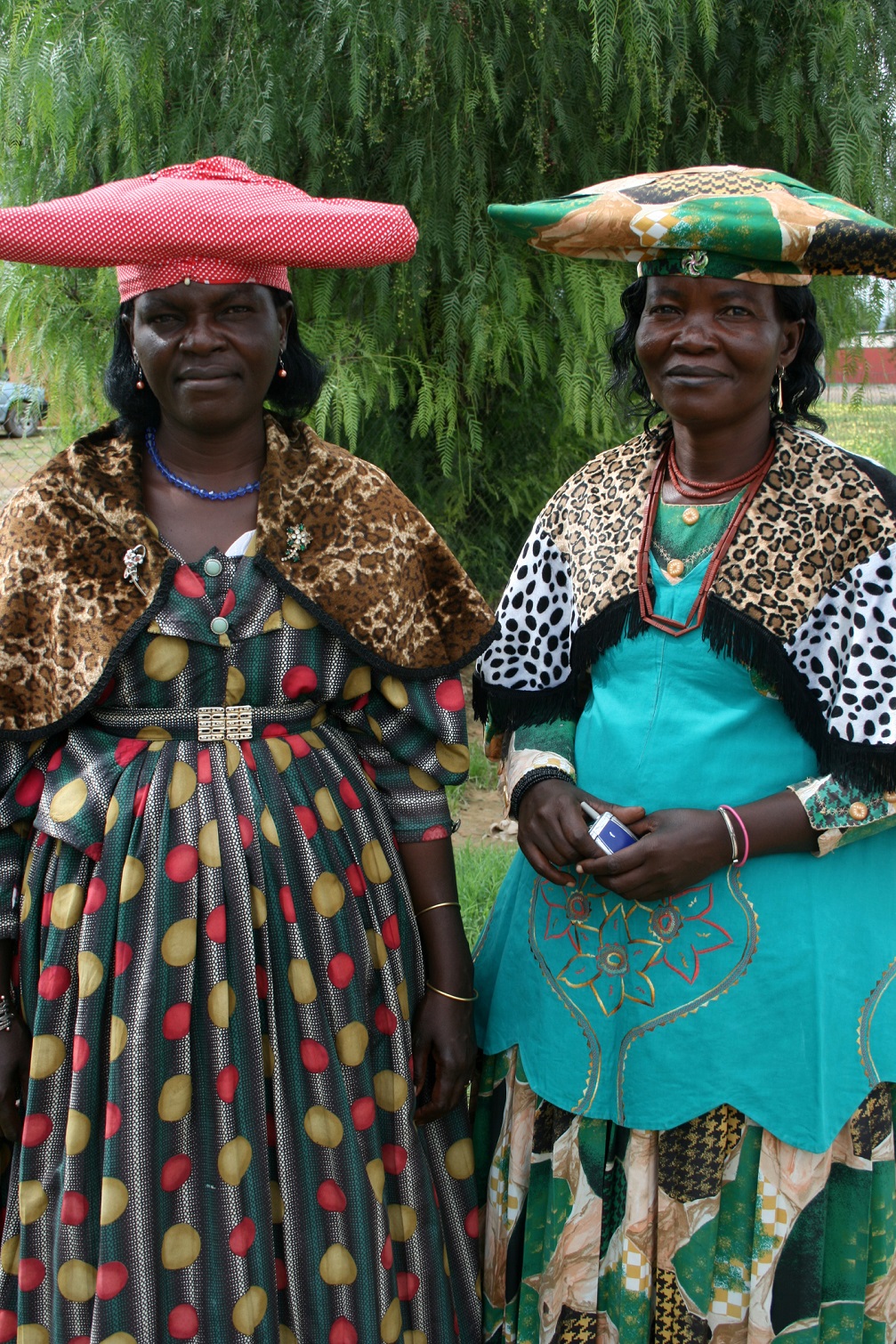


With so many diverse cultures, it’s impossible for tourists in Namibia to dress to fit in. Instead your wardrobe selection for your Namibia itinerary should be predicated by comfort. Since Namibia is considered a conservative country, modest clothes will be appreciated.
If you travel to Namibia in summer, you will want to not leave any skin exposed to the sun because it can be harsh. Long-sleeved garments that are lightweight and lightly colored are recommended. Wearing a hat when walking around will also keep you protected.
Bring along a rain jacket if your Nambia tour has been booked for the winter. For a winter escape to Namibia, pack a combination of garments for the cold and warm temperatures in the night and early mornings and afternoons, respectively.
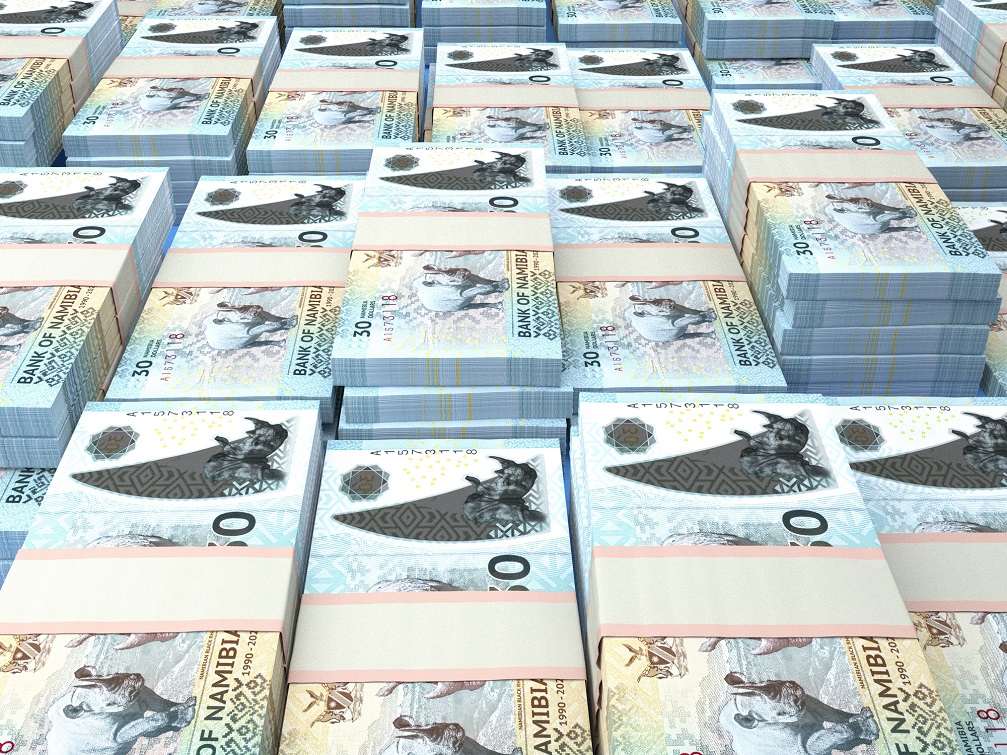


The national currency of Namibia is the Namibian Dollar (N$).
The Namibian Dollar comes in denominations of 10, 20, 30, 50, 100, 200 banknotes, and 5 and 1 dollar, 50c, 10c, and 5c coins.
The Namibian Dollar is equivalent to the South African Rand in value, so it’s accepted to buy goods and services anywhere in the country.
International Visa and MasterCard are widely accepted in Namibia. Major credit cards are accepted throughout the country, except they can’t be used at gas stations.
If you plan to go beyond the capital city, it would be wise to carry a little bit of cash. Make sure to keep it safe.
There are also exchange offices and ATMs available in the city and towns.



The official language of Namibia is English, but it’s the home language of less than seven percent of the population.
There are thirteen national languages, of which ten are indigenous African languages. About eighty percent of Namibians speak the majority language, Oshiwambo.
The three national languages are Indo-European. Afrikaans and German form part of this group and were once recognized as official languages before Namibia gained independence in nineteen-ninety.
A reliance on English to communicate is unique to the large towns and cities, with the native languages spoken mostly in rural areas.
Information for foreigners, road signs, and restaurant menus are printed in English and hotel, camp, and lodge staff speak English as well.
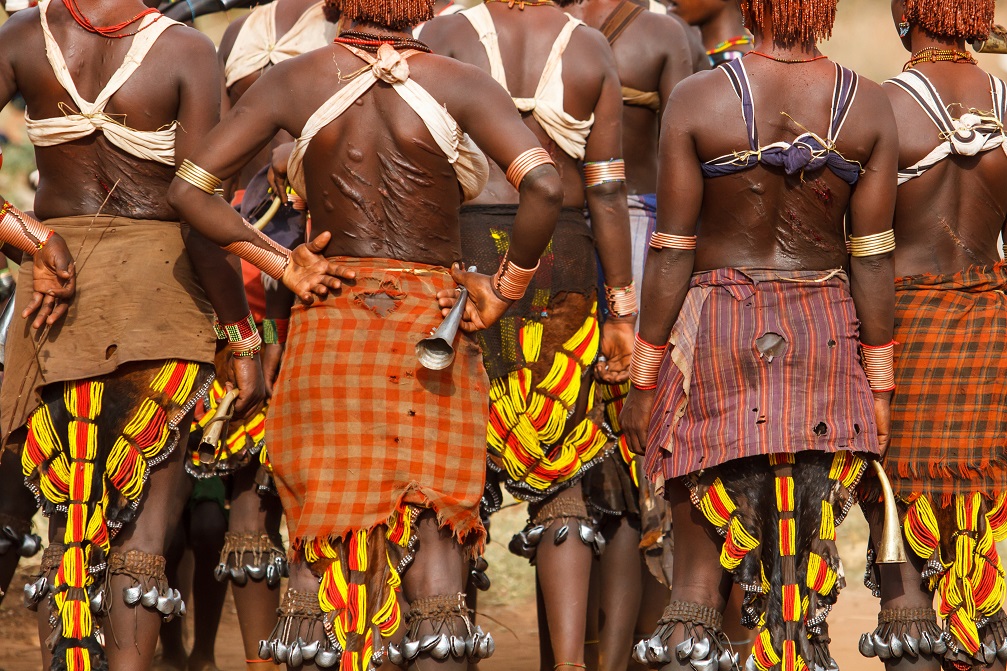


Namibian culture is a medley of the traditions and cultural practices of about eleven ethnic groups, of which the majority is the Ovambo. The Himba is perhaps one of the most recognized tribes in the country.
Each group has distinct differences, not only in dialect but also in music and dance, dress, and traditions. Although most traditional practices and wear of the groups are confined to the rural areas, and the majority of the town occupy, it is common to hear different native languages spoken in the urban areas of Namibia.
Afrikaners and Germans make up two-thirds and one-fifth of the population, respectively, and their cultures bear few similarities.
Despite the separation created by differing customs and traditions, there is unity amongst the groups. This can be seen in the music, sport, art, and food popular in the country.
Namibian’s are fun-loving, friendly people who are proud of their country and cultures. They possess an unfailing welcoming nature for tourists.
There are few unusual customs to take note of for your journey to Namibia. Local etiquette dictates respect for elders, PDA be kept to a minimum and an exchange of pleasantries to start conversations
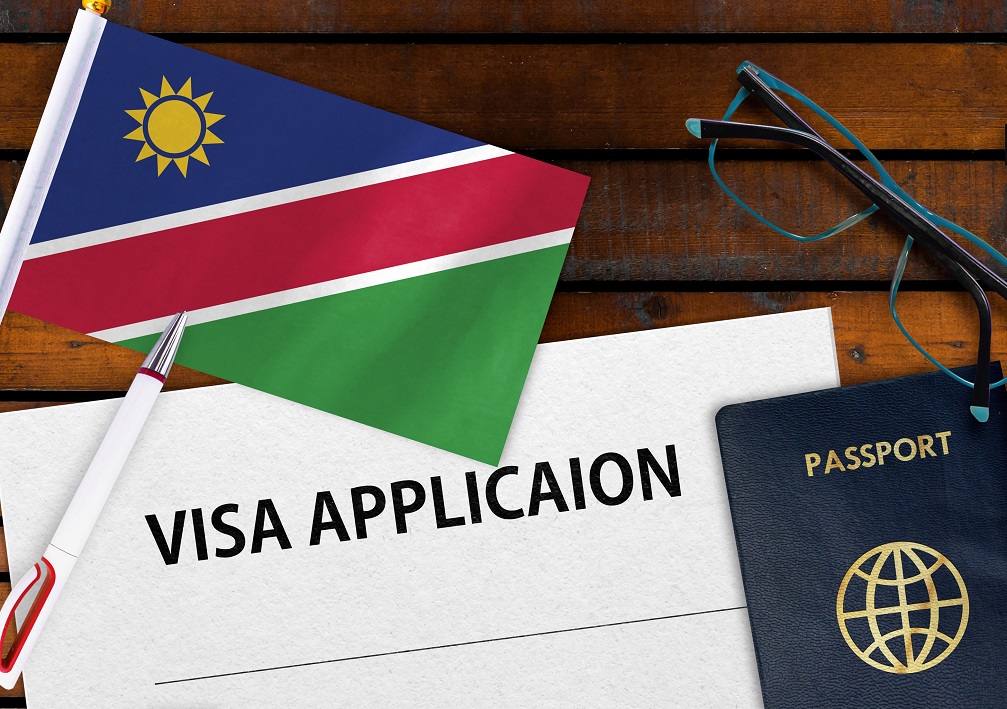


British nationals can enter Namibia for stays up to 90 days without a visa.
However, there can be instances where foreigners are allowed to stay for less than 90 days. Make sure to check at immigrations that you can stay for up to 90 days in Namibia and that you receive a correctly dated stamp from Namibian Immigration officials.
Passports should have a validity of a minimum of 6 months from the date of entry into Namibia and one blank page for immigration officers to use.
If you overstay your allowed visa, you can be detained, arrested you or given a fine.
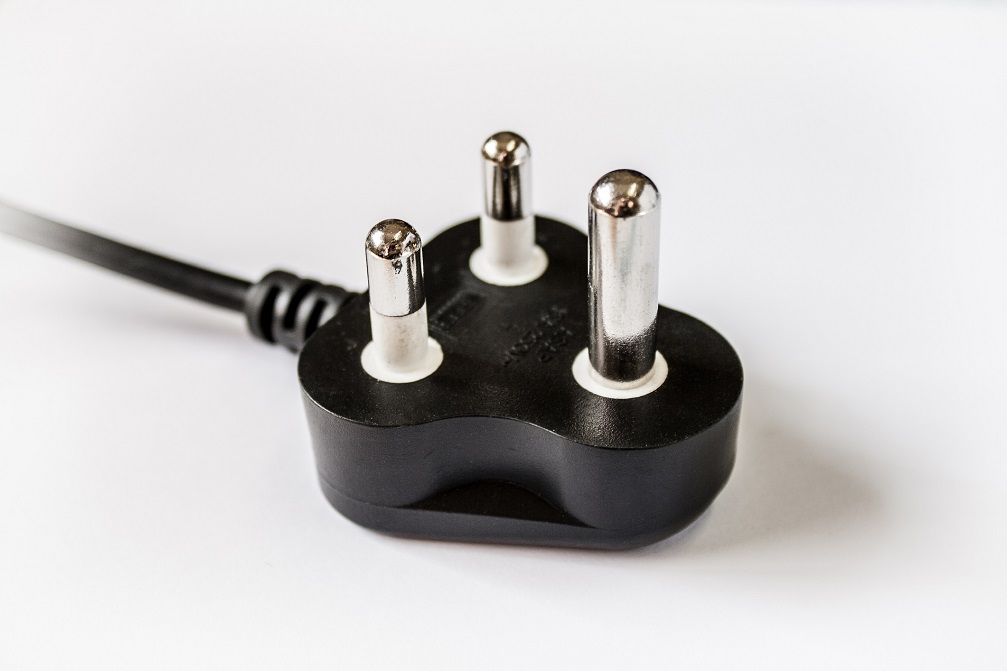


Type M (three round prongs in a triangle) and type D (type M but larger pins) sockets are used in Namibia. It is advised to buy a universal adapter with surge protection and use a step-down convertor for hairdryers and hot tools.
The standard voltage is 220V, and the standard frequency is 50Hz.



Namibia is a charming Southern African country with a short existence of thirty-one years.
Since gaining its own identity in the late twentieth century, Namibia has grown into a country filled with proud and lively people. Over the years, holidays in Namibia have gained in popularity internationally owing to its vast treasure trove of natural wonders.
Namibia boasts an enigmatic landscape where the country’s chief desert meets a volatile sapphire ocean.
Like many Southern African countries, wildlife conservation is vital to Namibians, as can be seen by the parks and reserves around the country that protect the Big Five.
Not only is Namibia one of the best countries to experience an African safari, it’s also ideal for stargazing, hot air ballooning, quad biking and road tripping.
Uninhibited exploration of the southern night sky is made possible by a combination of Namibia’s low population density and low air and light pollution.
On the country’s west coast, you’ll find rust-red sand dunes ideal for quad biking and vast plains perfect for hot air ballooning.
Driving around Namibia on seemingly endless stretches of road surrounded by undisturbed natural landscapes can be a much-needed escape from bustling city life.
A Namibia itinerary holds plenty of surprises like its exotic culinary quirks, which form the pillars of Namibian cuisine, and its blend of about thirteen different languages and cultures.



Namibia is a country situated in Southern Africa. It shares a border with Angola in the north, Botswana in the east, South Africa in the southeast, and Zambia in the northeast. The Atlantic Ocean covers the entire western region of Namibia, creating an unmissable view where the turquoise sea meets the iconic copper sand dunes of the Namib Desert.
The Namib Desert, along with the central plateau and the Kalahari, forms part of the country’s landscape. The Namib (meaning ‘vast place’ in one of the local ethnic languages, Nama) is a cool coastal desert, and it’s a rarity on the planet. This geographical enigma, and the oldest desert in the world, houses three crown jewels of the country: Sossusvlei, Dune 7 and the Skeleton Coast.
Sossusvlei is a pan formed from salt and clay nestled by giant crimson sand dunes—some of the largest in the world. It’s a spectacular sight and the reason many travelers visit Namibia. Dune 7, the seventh dune past the Tsauchab River, is the highest sand dune in the world and makes for a thrilling quad biking adventure. The Skeleton Coast is the most fascinating area of the Namib Desert, featuring spooky remnants of ships and animal remains.
The Central Plateau is the main agricultural zone of Namibia and where the capital city, Windhoek, is located, and the Fish River Canyon is in the south. The Fish River Canyon is the world’s second-largest canyon, following the Grand Canyon in the USA.
The Kalahari is a hardpan and rock-filled landscape covering the eastern side of Namibia.
Multiple rivers form natural borders around Namibia; the Orange River flows in the south, the Kunene and Kavango rivers in the north, and the Zambezi, Kwando, Linyanti, and Chobe rivers in the northeast.
There are no direct flights to Namibia from the UK and most people will travel to Namibia via South Africa. It is possible to fly to Namibia via Amsterdam on KLM, via Doha on Qatar Airways, or via Addis Ababa on Ethiopian Airlines.



Namibia has a subtropical desert climate. The county has plenty of sunshine (300 days worth!), an average rainy season in the early months of the year, and little humidity.
Summer is a prevalent season in the country. During the long Namibian summer (October to March), the country’s northern regions are prone to temperatures nearing 40 degrees Celsius, while the central highlands can experience temperatures in the mid-30s.
During a winter holiday in Namibia (Late May – late August), it’s warm during the day and cold at dusk and dawn. The coast has milder temperatures and chilling winds all year round.
The rainy season starts in January, and in the far south, rainfall occurs during winter.
Which begs the question, what is the ideal time for a Namibia holiday?
Any time of year is prime for a tour across Namibia. Most travelers prefer to travel to Namibia during the winter for a fly-drive around the country because temperatures are mild albeit extra cold at night.
A winter Safari in Namibia is also the best time for game viewing. In the Etosha National Park, wildlife flocks to the permanent water holes when the open water in the veld dries out. Zebras and cheetahs are among some of the animals you might see in the park.
Winter is the high season for Namibia holidays, tours, and safaris, so make sure to book your well in advance if you intend to travel to Nambia during this season.



Namibian cuisine is a mixture of ingredients and the preparation styles of different cultures. It reflects the need for survival over luxury and the humble evolution of the nation.
Some typical meals in Namibia bear similarities to the food enjoyed in other Southern African countries like a vetkoek. European foods like boerewors (Afrikaans/dutch for ‘farmer’s sausage’) and Sauerkraut are common.
Most signature meals have one main component that’s flavoured with earthy spices and garnishes.
Meat is a staple of the Namibian diet. Beef, lamb, goat, and Oryx are some meats incorporated into most meals by locals.
A local experience that you should treat yourself to during your Namibia journey is kapana (grilled beef) at Single Quarters in the capital city of Namibia, Windhoek. The beef is cut into thin slices, seasoned with spice, chilli or salt and braaied (or barbequed) over an open fire, giving the meat a smoky flavour. Top it off with a side of ‘salsa’, diced onions and tomatoes, to make it tastier.
Namibian cuisine also consists of a seasonal wild mushroom called Owawa. This highly demanded vegetable grows to an enormous size of 50 cm in diameter sometimes.
There are exotic dishes too, like mopane worms, which you should try if you feel adventurous, and bullfrog (this meal is more common in Namibia’s northern regions and cooked specially to prevent poisoning).
An assortment of seafood can be found in Namibia’s coastal towns. Swakopmund has the best oysters, and lobsters are a local delicacy in Luderitz.



With so many diverse cultures, it’s impossible for tourists in Namibia to dress to fit in. Instead your wardrobe selection for your Namibia itinerary should be predicated by comfort. Since Namibia is considered a conservative country, modest clothes will be appreciated.
If you travel to Namibia in summer, you will want to not leave any skin exposed to the sun because it can be harsh. Long-sleeved garments that are lightweight and lightly colored are recommended. Wearing a hat when walking around will also keep you protected.
Bring along a rain jacket if your Nambia tour has been booked for the winter. For a winter escape to Namibia, pack a combination of garments for the cold and warm temperatures in the night and early mornings and afternoons, respectively.



The national currency of Namibia is the Namibian Dollar (N$).
The Namibian Dollar comes in denominations of 10, 20, 30, 50, 100, 200 banknotes, and 5 and 1 dollar, 50c, 10c, and 5c coins.
The Namibian Dollar is equivalent to the South African Rand in value, so it’s accepted to buy goods and services anywhere in the country.
International Visa and MasterCard are widely accepted in Namibia. Major credit cards are accepted throughout the country, except they can’t be used at gas stations.
If you plan to go beyond the capital city, it would be wise to carry a little bit of cash. Make sure to keep it safe.
There are also exchange offices and ATMs available in the city and towns.



The official language of Namibia is English, but it’s the home language of less than seven percent of the population.
There are thirteen national languages, of which ten are indigenous African languages. About eighty percent of Namibians speak the majority language, Oshiwambo.
The three national languages are Indo-European. Afrikaans and German form part of this group and were once recognized as official languages before Namibia gained independence in nineteen-ninety.
A reliance on English to communicate is unique to the large towns and cities, with the native languages spoken mostly in rural areas.
Information for foreigners, road signs, and restaurant menus are printed in English and hotel, camp, and lodge staff speak English as well.



Namibian culture is a medley of the traditions and cultural practices of about eleven ethnic groups, of which the majority is the Ovambo. The Himba is perhaps one of the most recognized tribes in the country.
Each group has distinct differences, not only in dialect but also in music and dance, dress, and traditions. Although most traditional practices and wear of the groups are confined to the rural areas, and the majority of the town occupy, it is common to hear different native languages spoken in the urban areas of Namibia.
Afrikaners and Germans make up two-thirds and one-fifth of the population, respectively, and their cultures bear few similarities.
Despite the separation created by differing customs and traditions, there is unity amongst the groups. This can be seen in the music, sport, art, and food popular in the country.
Namibian’s are fun-loving, friendly people who are proud of their country and cultures. They possess an unfailing welcoming nature for tourists.
There are few unusual customs to take note of for your journey to Namibia. Local etiquette dictates respect for elders, PDA be kept to a minimum and an exchange of pleasantries to start conversations



British nationals can enter Namibia for stays up to 90 days without a visa.
However, there can be instances where foreigners are allowed to stay for less than 90 days. Make sure to check at immigrations that you can stay for up to 90 days in Namibia and that you receive a correctly dated stamp from Namibian Immigration officials.
Passports should have a validity of a minimum of 6 months from the date of entry into Namibia and one blank page for immigration officers to use.
If you overstay your allowed visa, you can be detained, arrested you or given a fine.



Type M (three round prongs in a triangle) and type D (type M but larger pins) sockets are used in Namibia. It is advised to buy a universal adapter with surge protection and use a step-down convertor for hairdryers and hot tools.
The standard voltage is 220V, and the standard frequency is 50Hz.
Travel related news, information and inspirational articles and videos for travellers booking flights or holidays to Namibia South Africa. Ask questions about travel in Namibia South Africa and get answers from Namibia South Africa experts
NEWS
Inspiration, Information and Travel Guides
MEET THE Namibia South Africa EXPERTS
If you are looking to book a holiday to Namibia South Africa or needs some help and advice planning travel to Namibia South Africa then contact one of the UK based independent travel agents that specialise in Namibia South Africa itineraries.
FEATURED VIDEOS
Your Travel Questions Answered
Ask any travel related question and get an answer from one of our experts that will provide you with an answer from their personal experience
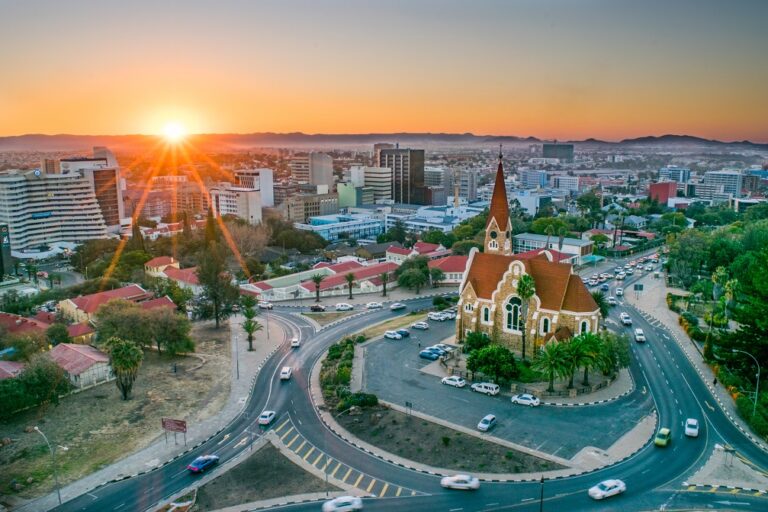

I’m keen to visit Walvis Bay in Namibia, but what other tourist attractions are there to explore?

